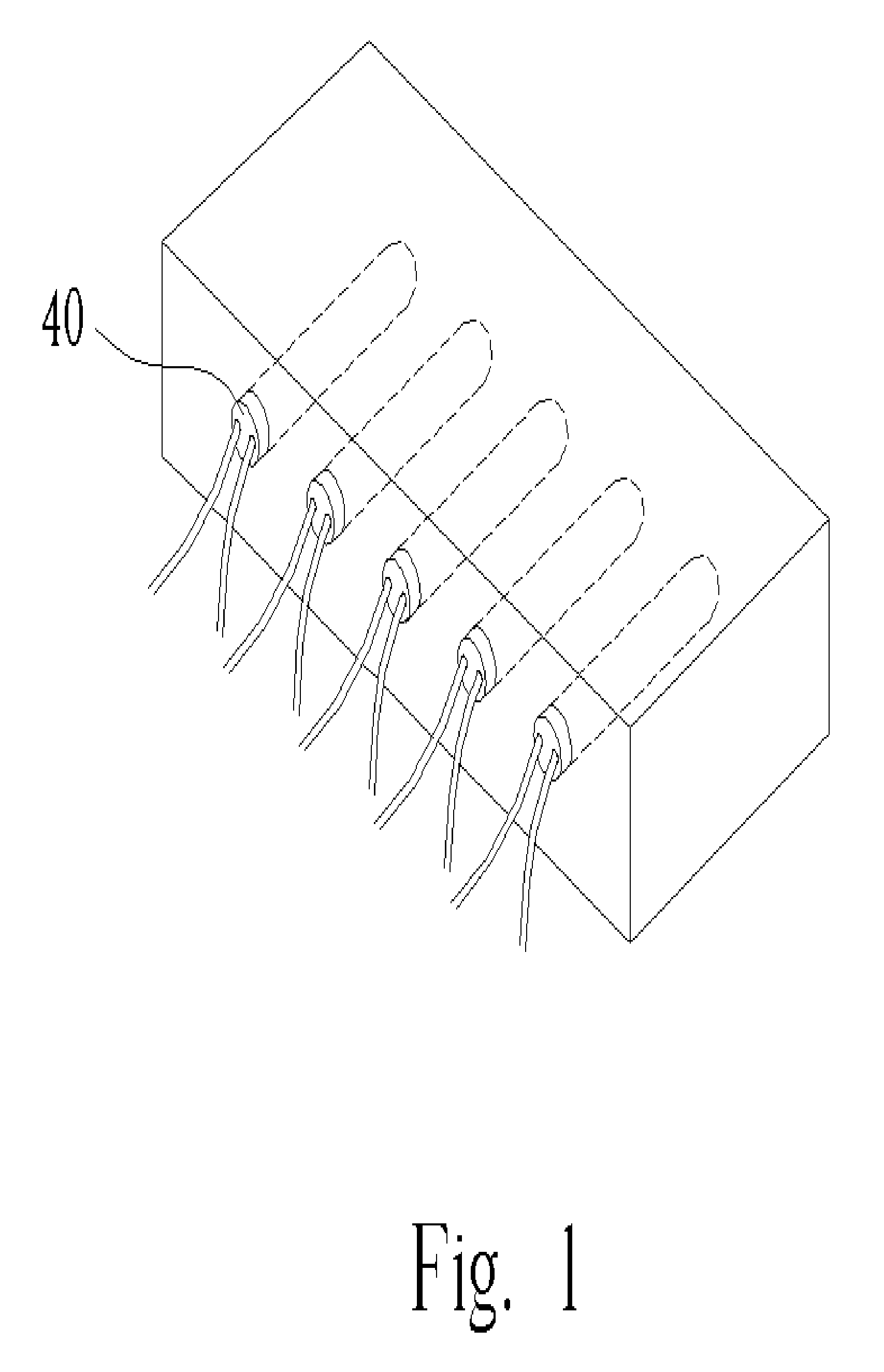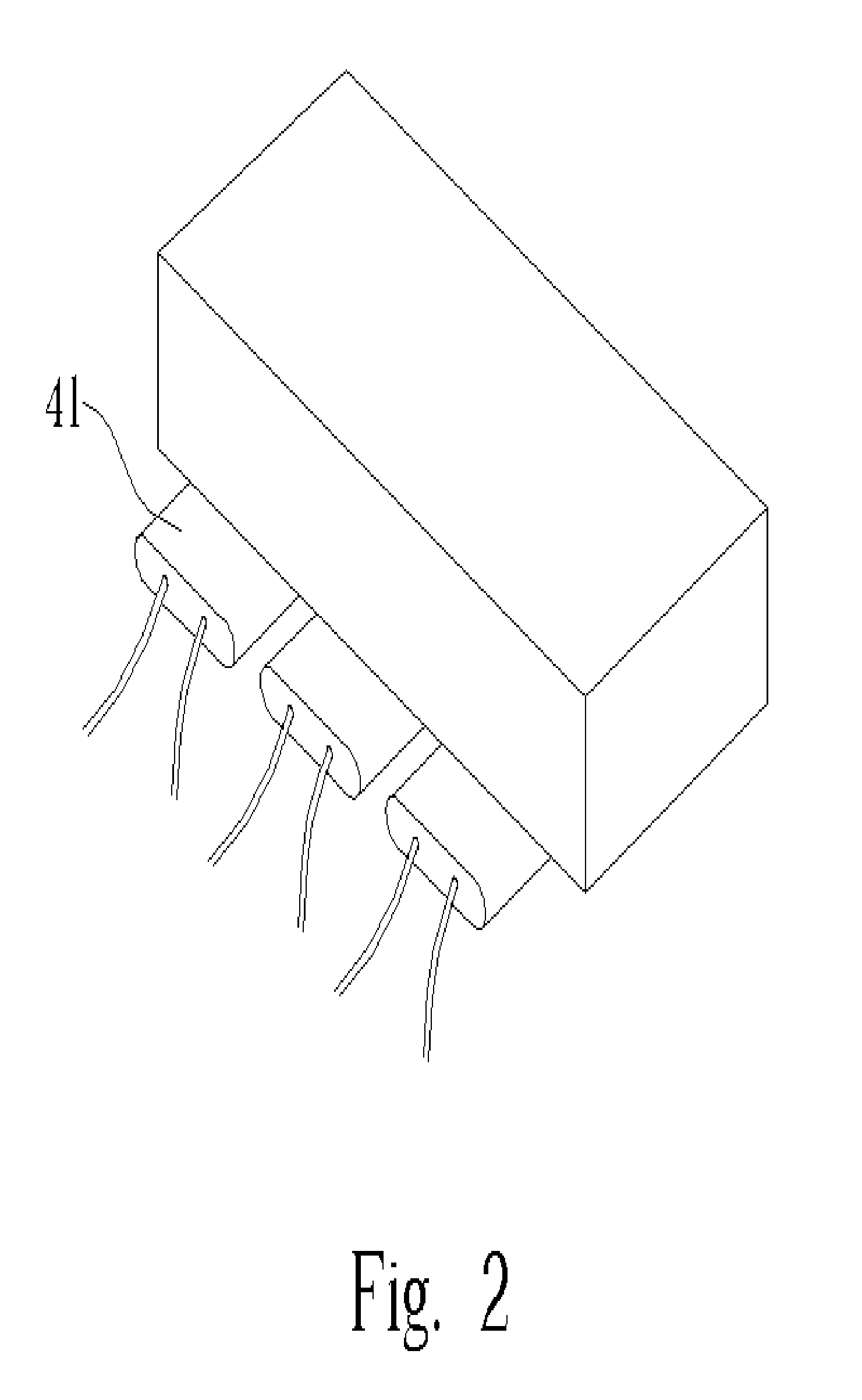Micro-heating apparatus for locally controlling the temperature in a mold
a mold temperature and micro-heating technology, which is applied in the direction of electrical equipment, ohmic resistance heating, electric heating, etc., can solve the problems of affecting the quality of molds, so as to achieve high flow length/sidewall thickness, high heating effect, and high transfer ratio
- Summary
- Abstract
- Description
- Claims
- Application Information
AI Technical Summary
Benefits of technology
Problems solved by technology
Method used
Image
Examples
Embodiment Construction
[0029] The present invention comprises at least a micro-heater fabricated by MEMS set in an injection and hot embossing mold for supplying heat resource in a local portion of the mold when molding a product. The present invention further comprises at least a resistance temperature detector (R.T.D) near the micro-heater so that the micro-heater can locally control the mold temperature to an accuracy of ±5° C. Since the arrangement of the micro-heaters insures that the micro-heaters can locally heat the mold around the microstructures, the plastic material can flow in a better station in the mold having fine figures or high thickness variation during filling and compressing processes.
[0030] Please refer to FIG. 4. FIG. 4 is a schematic diagram of the plastic material 15 flowing through a portion of a stamper 17 according to the present invention. During the injection molding process, the plastic material 15 flows through the portion, with high thickness variation, of the stamper 17. ...
PUM
| Property | Measurement | Unit |
|---|---|---|
| mold temperature | aaaaa | aaaaa |
| size | aaaaa | aaaaa |
| resistance | aaaaa | aaaaa |
Abstract
Description
Claims
Application Information
 Login to View More
Login to View More - R&D
- Intellectual Property
- Life Sciences
- Materials
- Tech Scout
- Unparalleled Data Quality
- Higher Quality Content
- 60% Fewer Hallucinations
Browse by: Latest US Patents, China's latest patents, Technical Efficacy Thesaurus, Application Domain, Technology Topic, Popular Technical Reports.
© 2025 PatSnap. All rights reserved.Legal|Privacy policy|Modern Slavery Act Transparency Statement|Sitemap|About US| Contact US: help@patsnap.com



